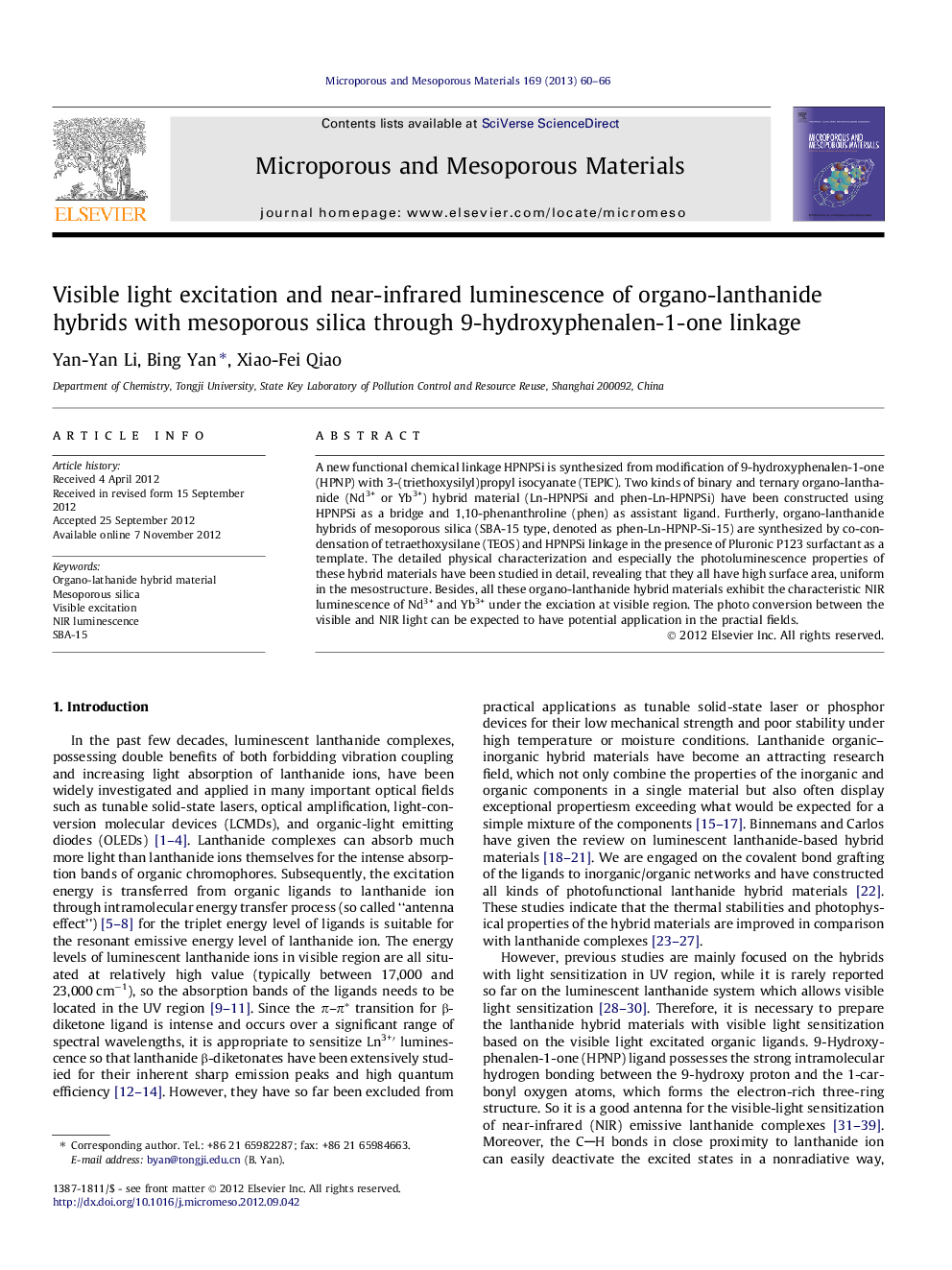| Article ID | Journal | Published Year | Pages | File Type |
|---|---|---|---|---|
| 73695 | Microporous and Mesoporous Materials | 2013 | 7 Pages |
A new functional chemical linkage HPNPSi is synthesized from modification of 9-hydroxyphenalen-1-one (HPNP) with 3-(triethoxysilyl)propyl isocyanate (TEPIC). Two kinds of binary and ternary organo-lanthanide (Nd3+ or Yb3+) hybrid material (Ln-HPNPSi and phen-Ln-HPNPSi) have been constructed using HPNPSi as a bridge and 1,10-phenanthroline (phen) as assistant ligand. Furtherly, organo-lanthanide hybrids of mesoporous silica (SBA-15 type, denoted as phen-Ln-HPNP-Si-15) are synthesized by co-condensation of tetraethoxysilane (TEOS) and HPNPSi linkage in the presence of Pluronic P123 surfactant as a template. The detailed physical characterization and especially the photoluminescence properties of these hybrid materials have been studied in detail, revealing that they all have high surface area, uniform in the mesostructure. Besides, all these organo-lanthanide hybrid materials exhibit the characteristic NIR luminescence of Nd3+ and Yb3+ under the exciation at visible region. The photo conversion between the visible and NIR light can be expected to have potential application in the practial fields.
Graphical abstractA new functional chemical linkage HPNPSi is achieved from the modification of 9-hydroxyphenalen-1-one (HPNP). Then binary and ternary lanthanide (Nd3+ or Yb3+) silica and mesoporous S15 type of hybrid materials (HPNP-S15) are synthesized. All these materials exhibit the characteristic NIR luminescence of Nd3+ and Yb3+.Figure optionsDownload full-size imageDownload as PowerPoint slideHighlights► Novel linkages of functionalized 9-hydroxyphenalen-1-one derivatives. ► New lanthanide mesoporous hybrids.. ► Excitation in visible region. ► Luminescence in NIR region.
